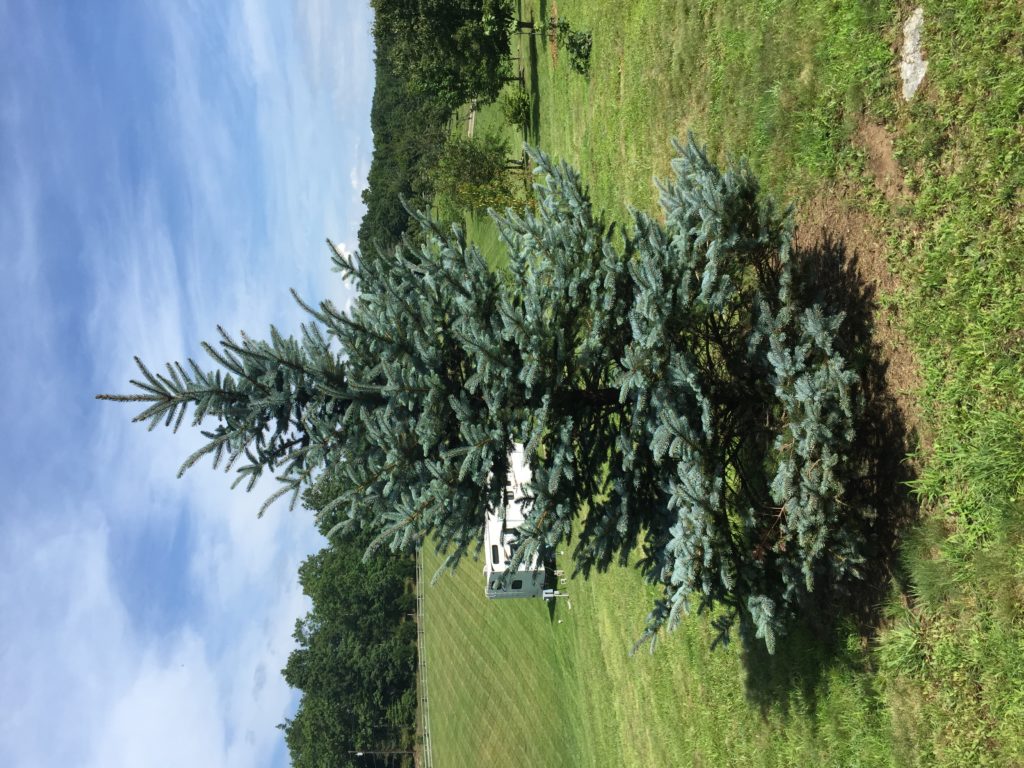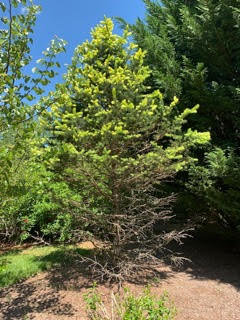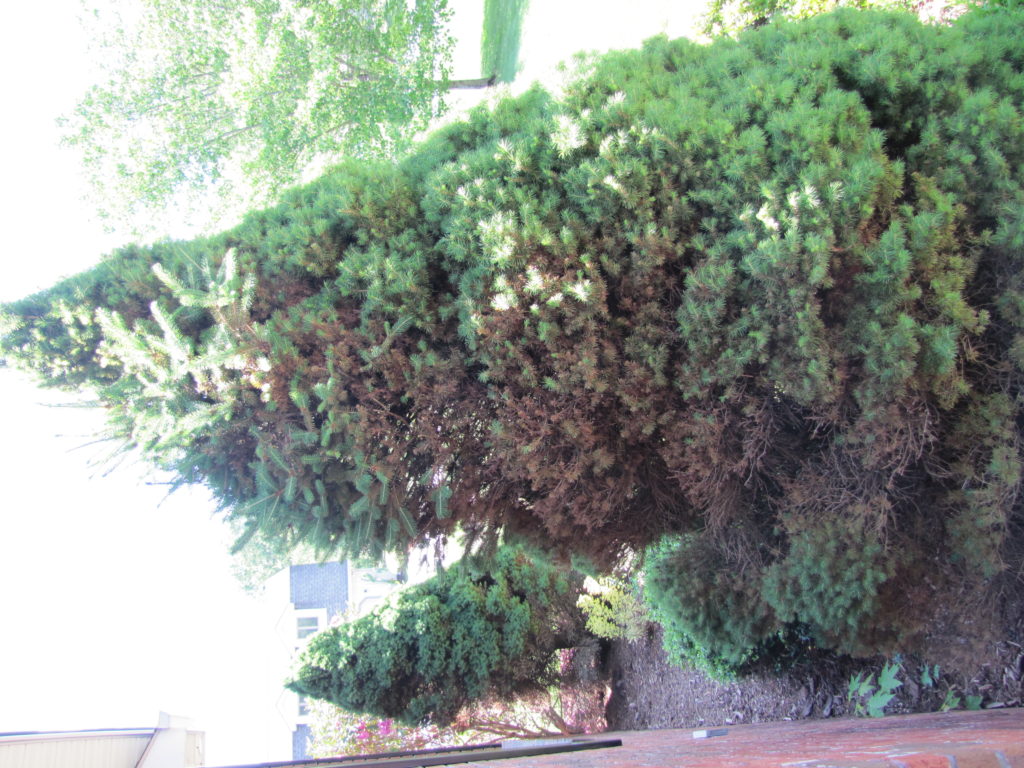Pest alert – Colorado Blue Spruce Issues
go.ncsu.edu/readext?712078
en Español / em Português
El inglés es el idioma de control de esta página. En la medida en que haya algún conflicto entre la traducción al inglés y la traducción, el inglés prevalece.
Al hacer clic en el enlace de traducción se activa un servicio de traducción gratuito para convertir la página al español. Al igual que con cualquier traducción por Internet, la conversión no es sensible al contexto y puede que no traduzca el texto en su significado original. NC State Extension no garantiza la exactitud del texto traducido. Por favor, tenga en cuenta que algunas aplicaciones y/o servicios pueden no funcionar como se espera cuando se traducen.
Português
Inglês é o idioma de controle desta página. Na medida que haja algum conflito entre o texto original em Inglês e a tradução, o Inglês prevalece.
Ao clicar no link de tradução, um serviço gratuito de tradução será ativado para converter a página para o Português. Como em qualquer tradução pela internet, a conversão não é sensivel ao contexto e pode não ocorrer a tradução para o significado orginal. O serviço de Extensão da Carolina do Norte (NC State Extension) não garante a exatidão do texto traduzido. Por favor, observe que algumas funções ou serviços podem não funcionar como esperado após a tradução.
English
English is the controlling language of this page. To the extent there is any conflict between the English text and the translation, English controls.
Clicking on the translation link activates a free translation service to convert the page to Spanish. As with any Internet translation, the conversion is not context-sensitive and may not translate the text to its original meaning. NC State Extension does not guarantee the accuracy of the translated text. Please note that some applications and/or services may not function as expected when translated.
Collapse ▲The Colorado Blue Spruce is a beautiful tree. Its blue/gray color, conical shape, and erect stems make this specialty conifer a popular plant. However, I see many of these trees dying locally.

This is an ideally sited Colorado blue spruce; high altitude around 3000 feet, full sun, well drained soil, and plenty of air circulation.
Should you invest in a Colorado blue spruce? First of all, these trees are meant to be in Colorado at high elevations enjoying cool, flowing air and low humidity. It stands to reason that they would suffer in small yards surrounded by woods when the temperatures are near 90 degrees and the humidity is 85%. It is too hot, humid, wet, and shady for the trees in much of Western North Carolina.
Blue spruces like dry, sunny, windy environments. They are from Colorado, Utah and the southwestern states where they get very little rain. Our humidity is too much for them and most of us have too much shade and not enough air circulation for them. They eventually get needle cast fungus which makes the needles fall off.
Colorado blue spruces grow great at high elevation above 4000 feet. Hendersonville is at 2100 feet. This is why Christmas tree farms do not work here. We must go into the higher elevation around Boone, NC to grow Christmas trees.
- Plant Colorado blue spruce high. Build a small mound to provide soil water drainage.
- Water the tree in times of drought.
- We also need to mulch the trees lightly to keep the roots cool.
- We should keep other plants away from them because blue spruce does not like shade or low air flow. Provide an open area for these to grow.
- We need to fertilize spruce regularly at three times per year. Lime according to a soil test.
- We need to spray these trees with copper based fungicides to prevent needle cast disease.
- Scout the trees for spider mites and treat if necessary.
The bottom line is that most high altitude conifers such as Colorado blue spruce, dwarf spruce, and others do not last very long in the southern landscape without a lot of help. Even with help, Colorado blue spruce often eventually dies.






